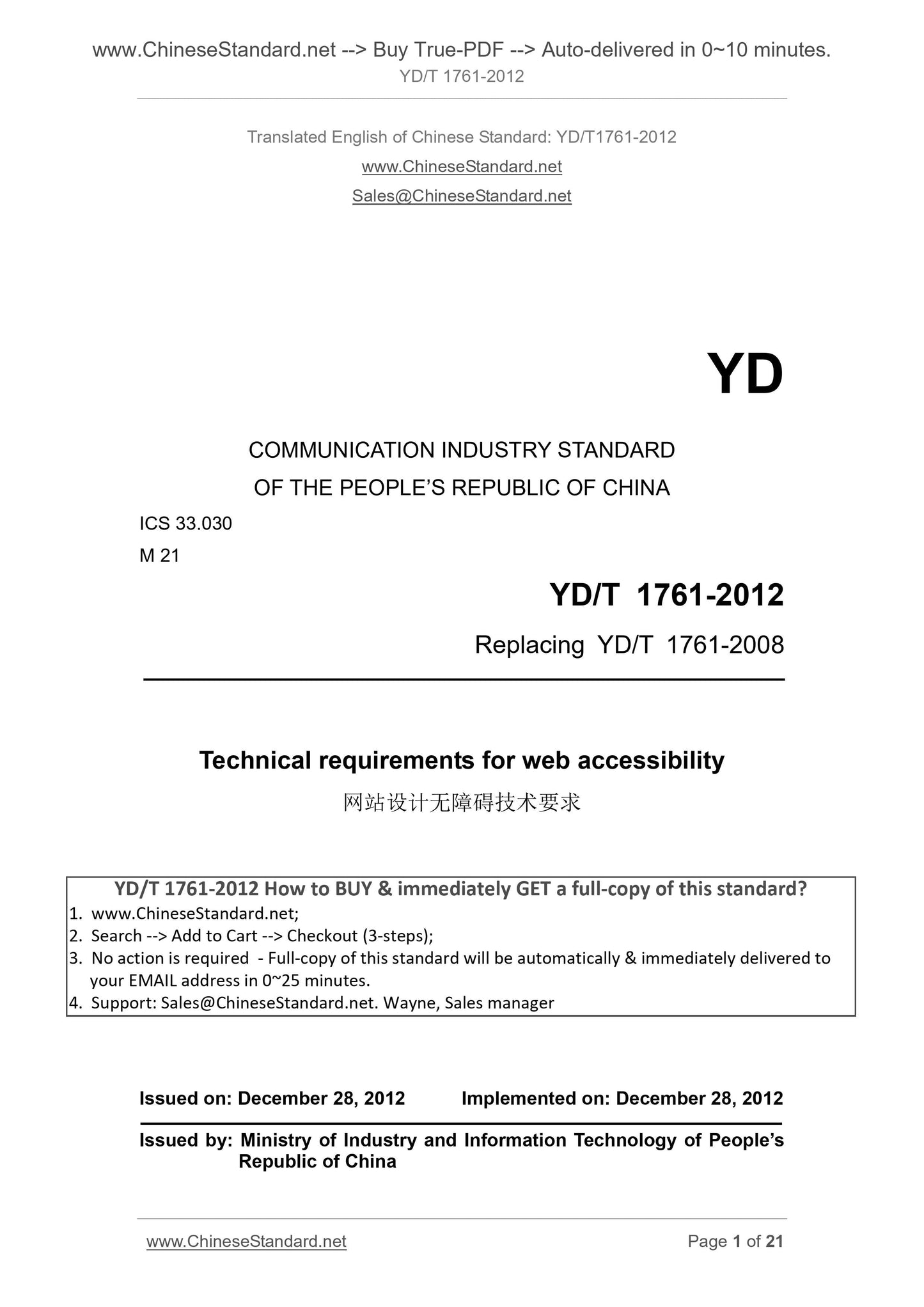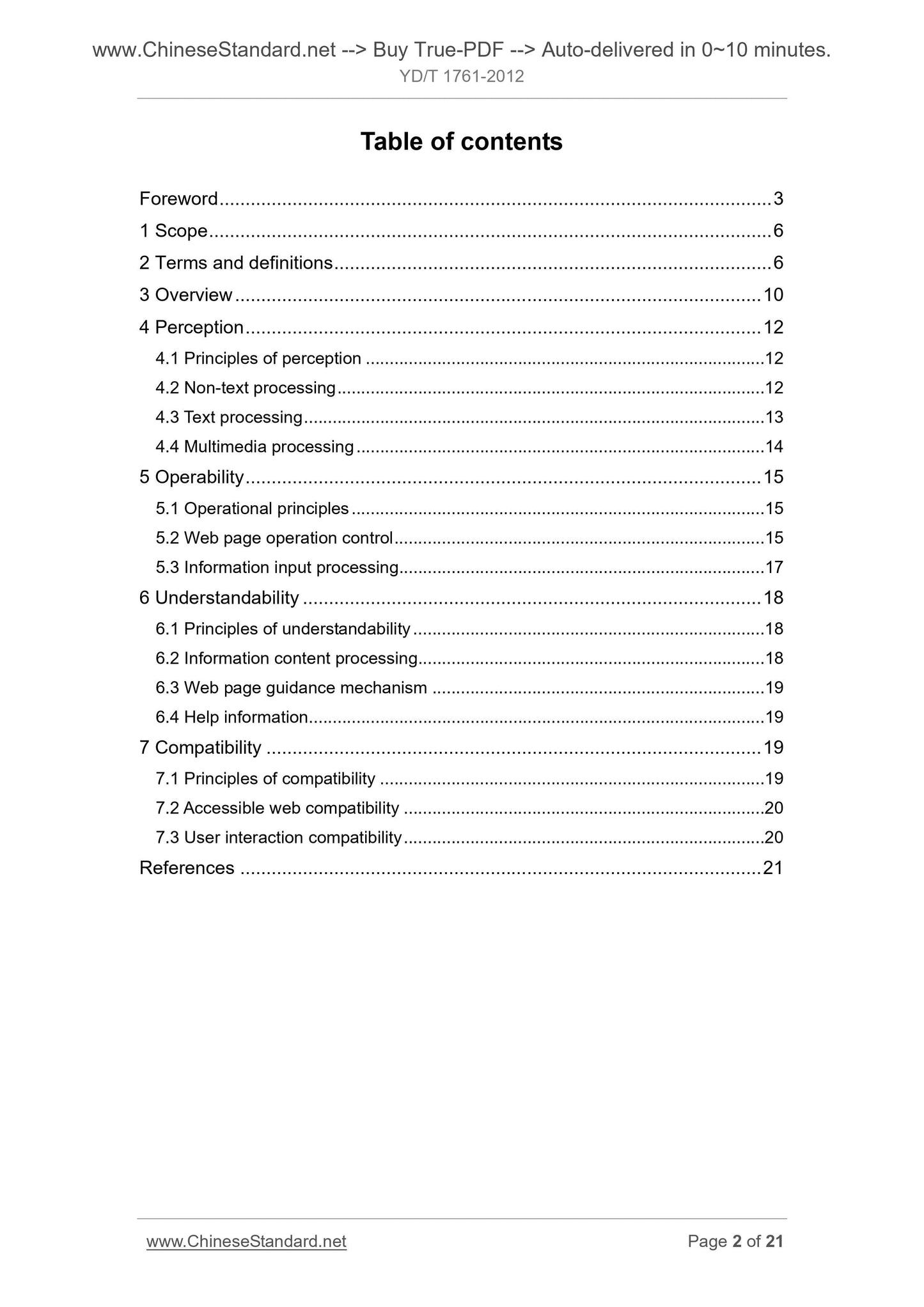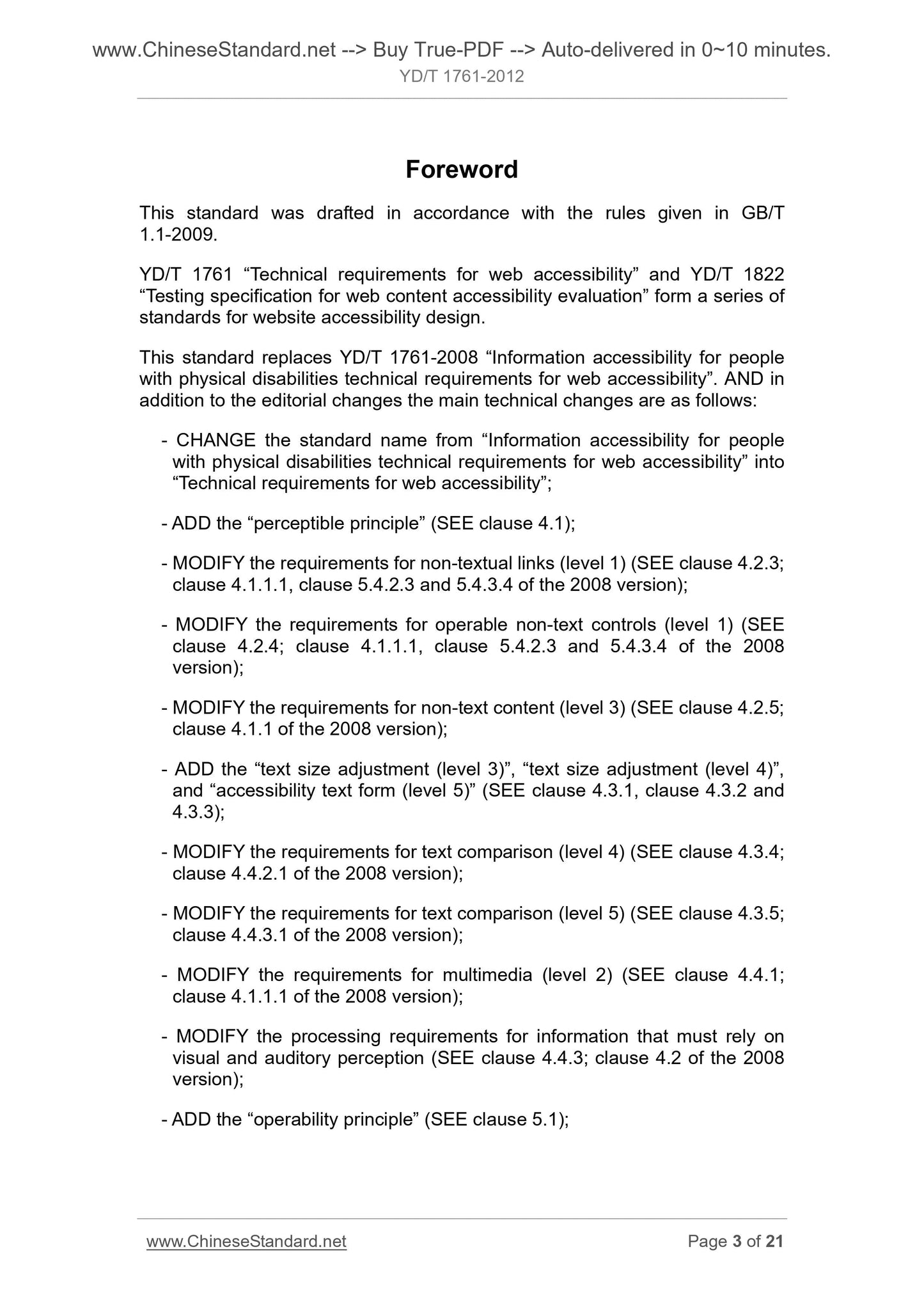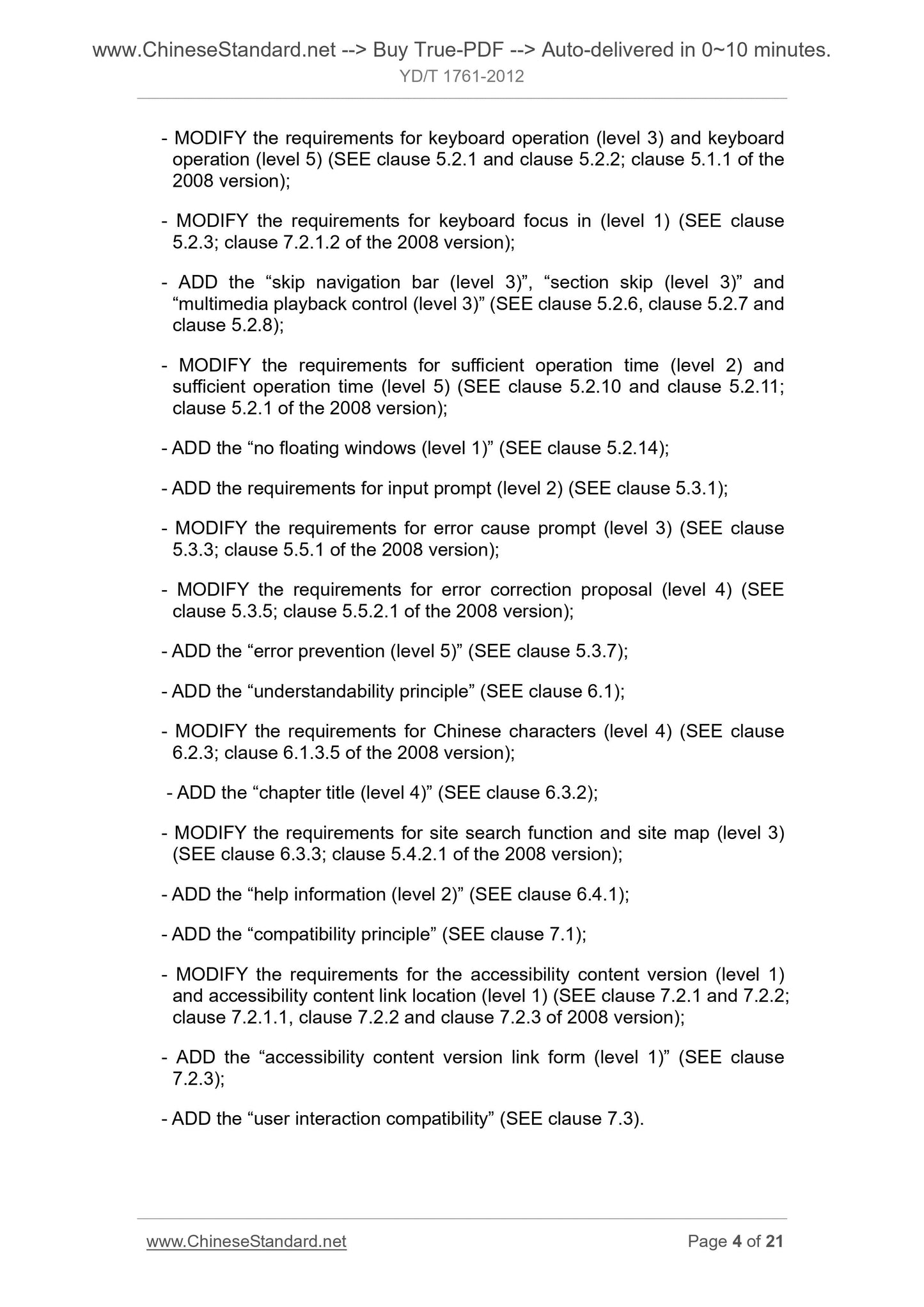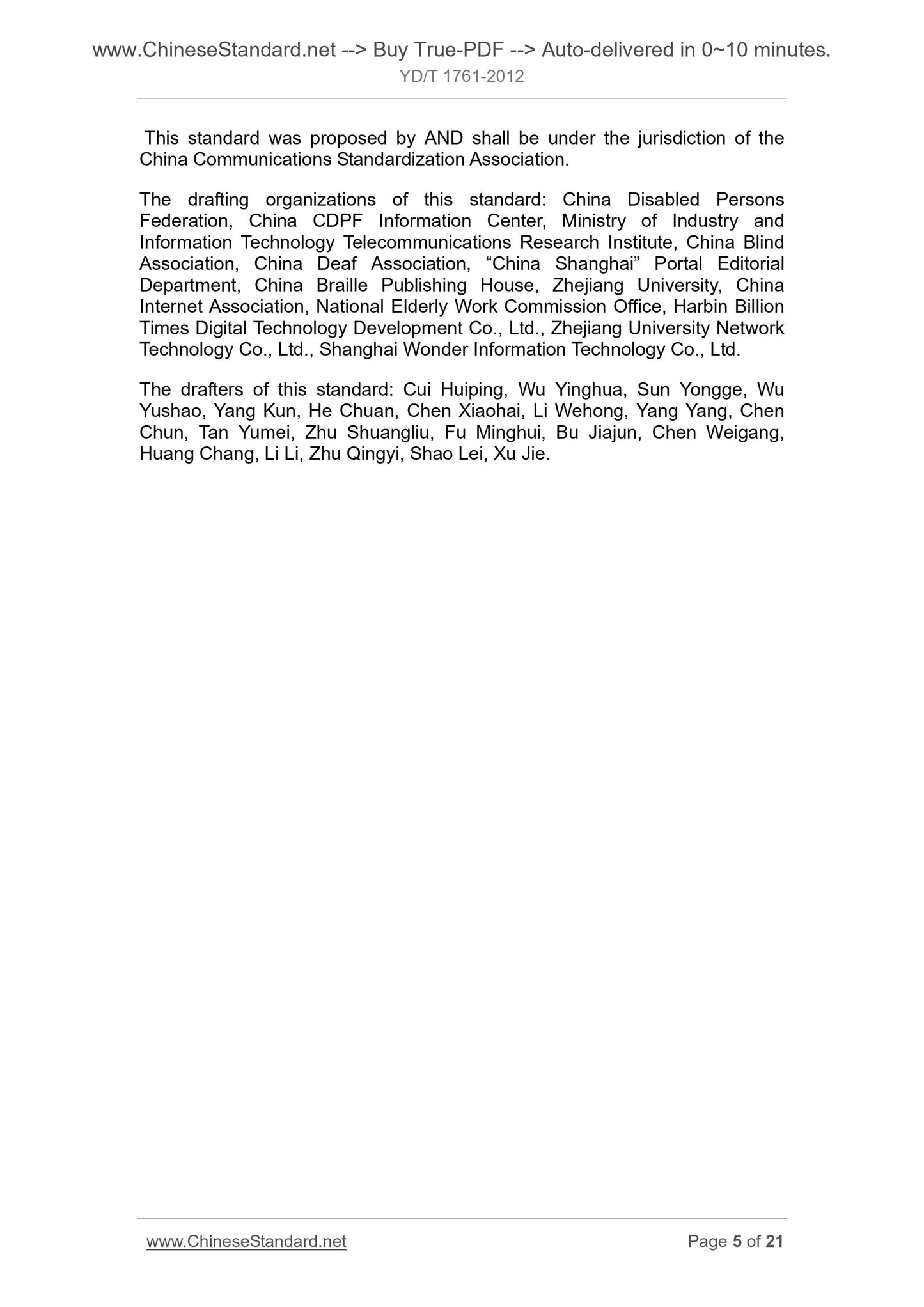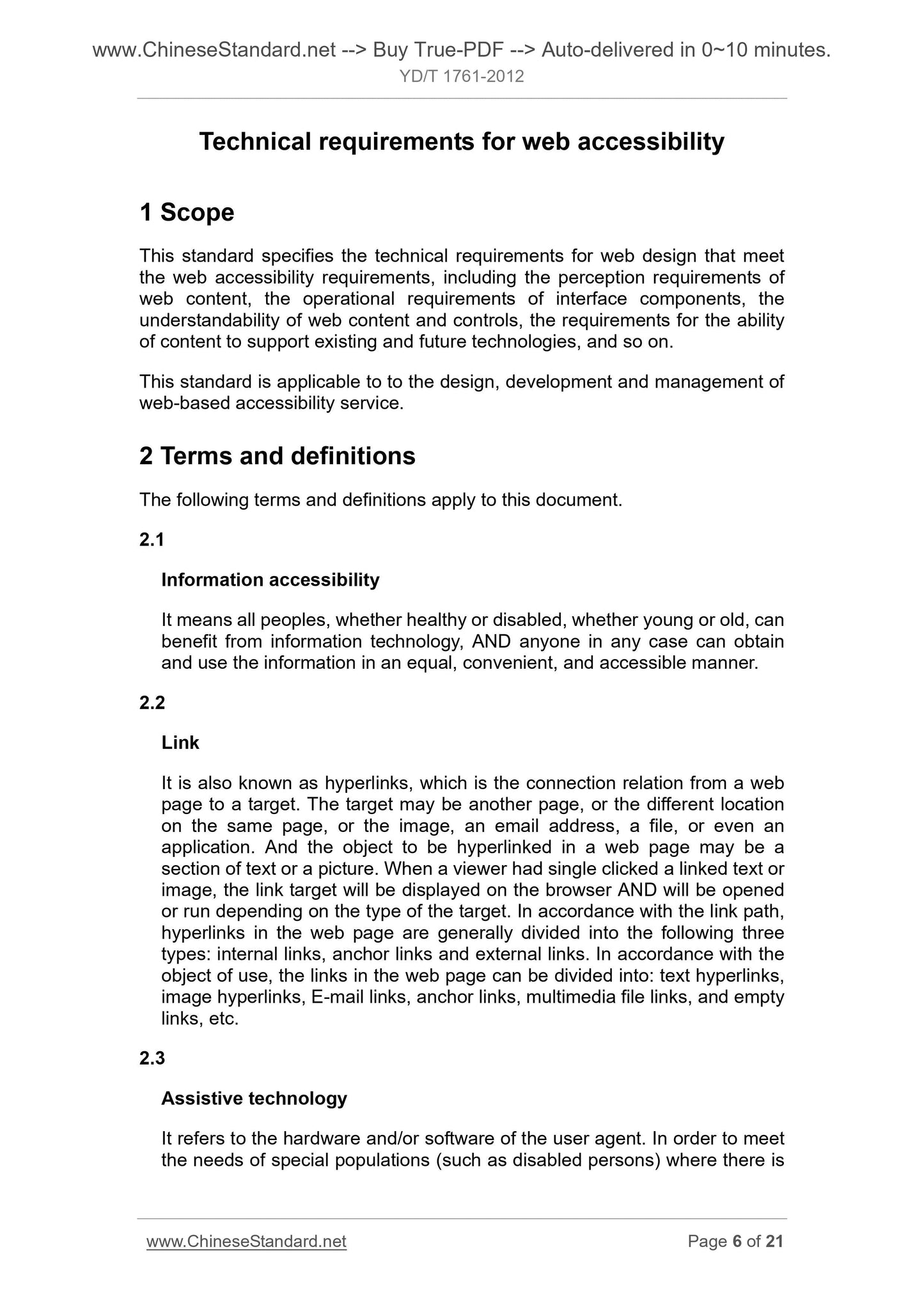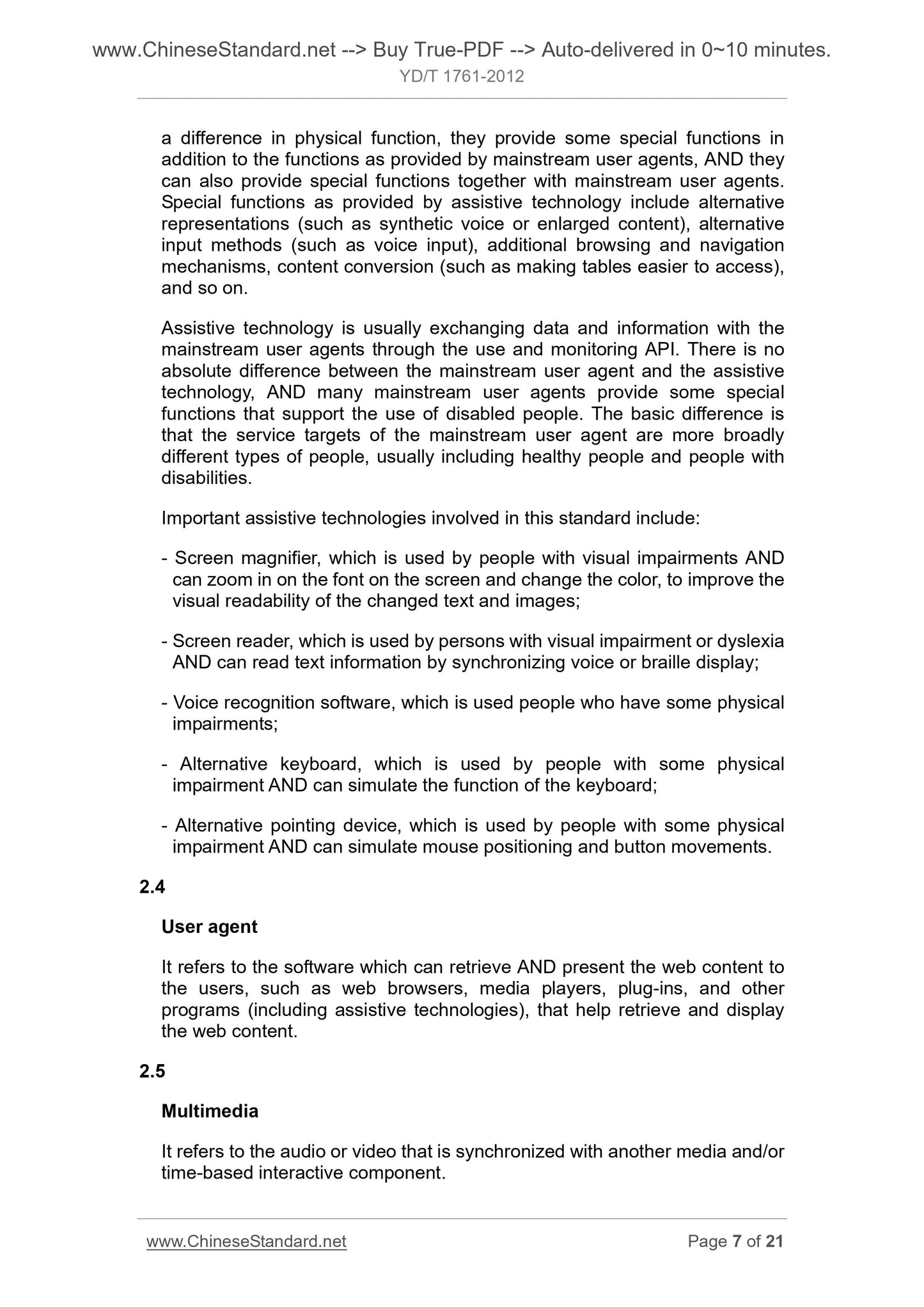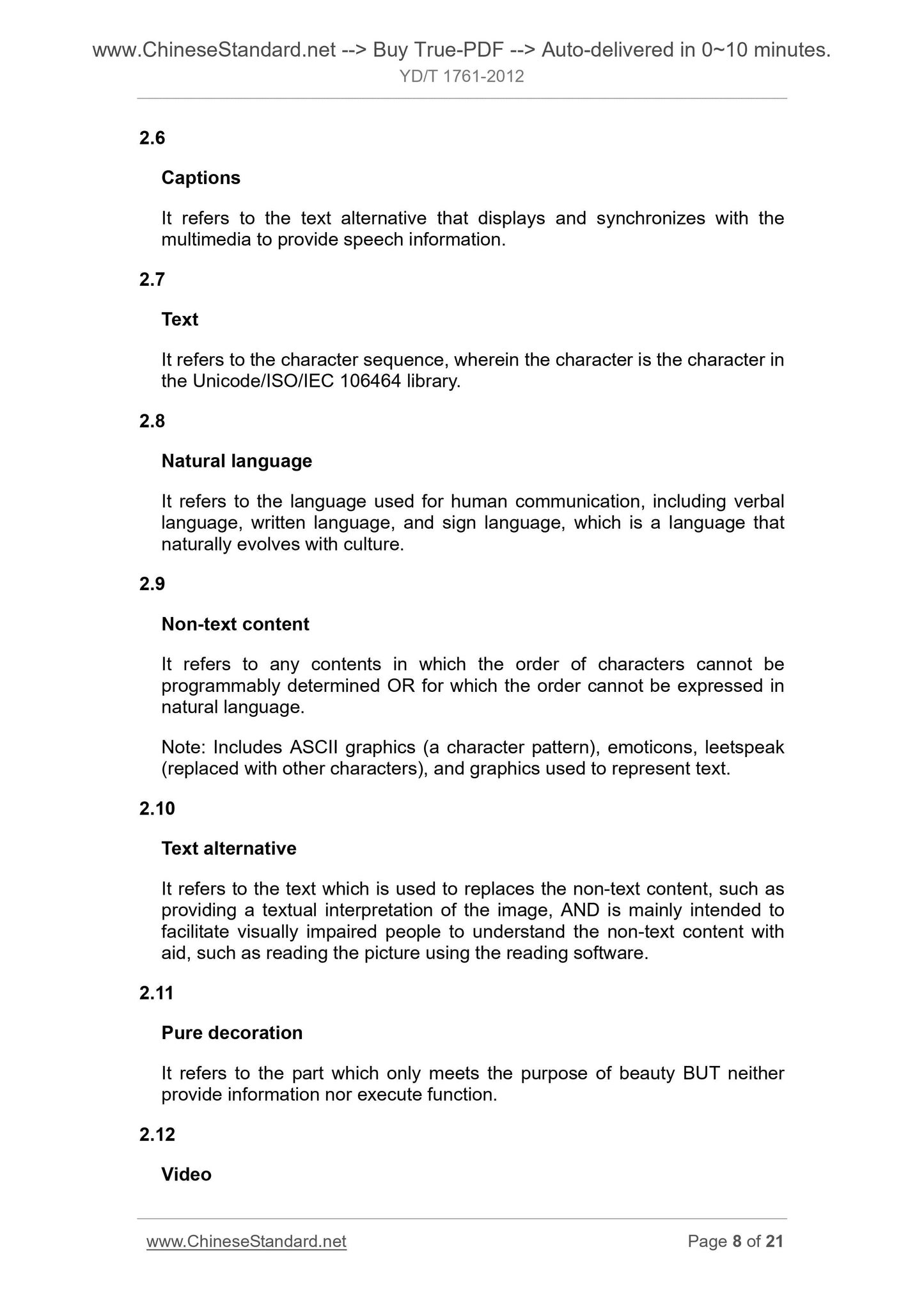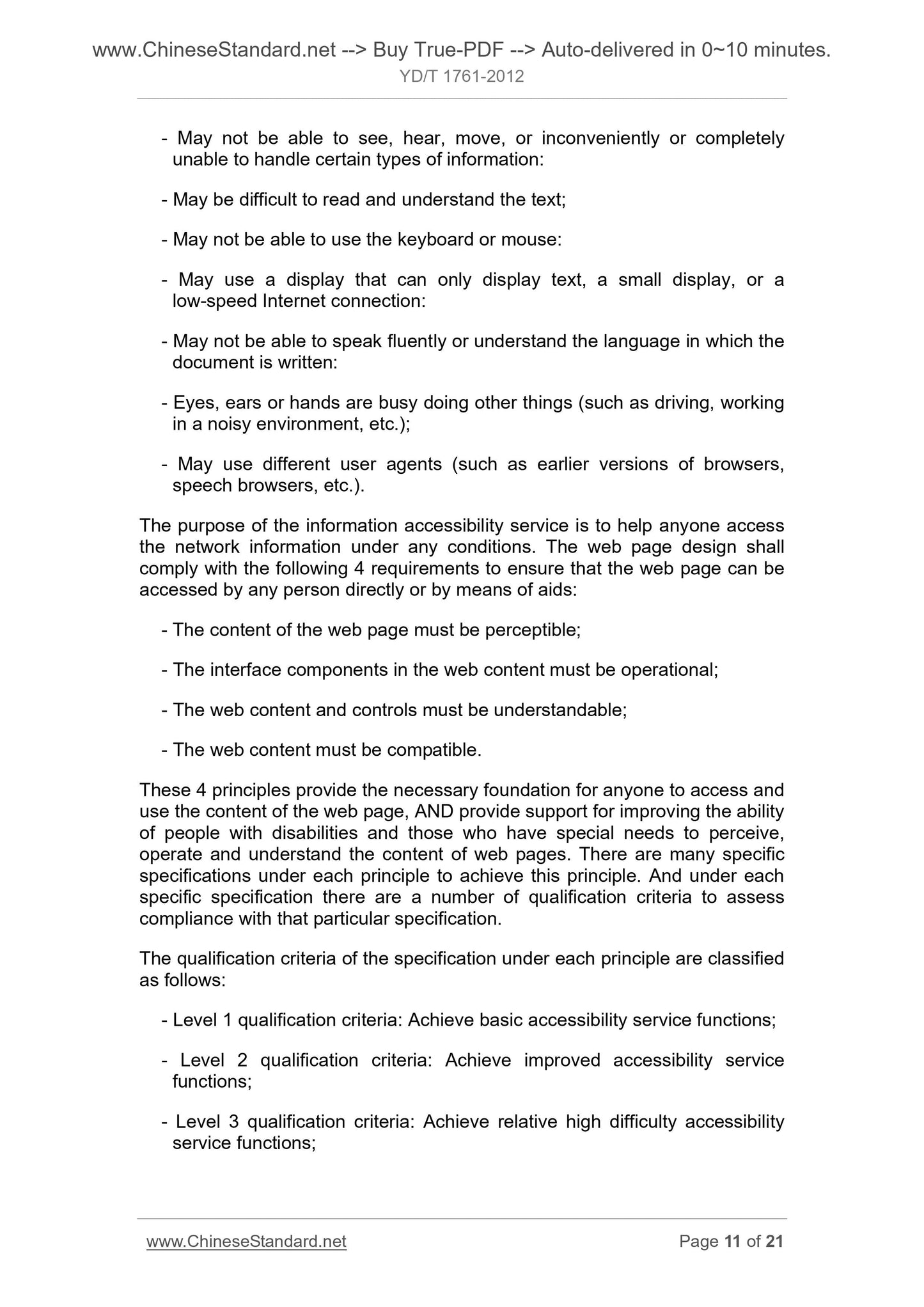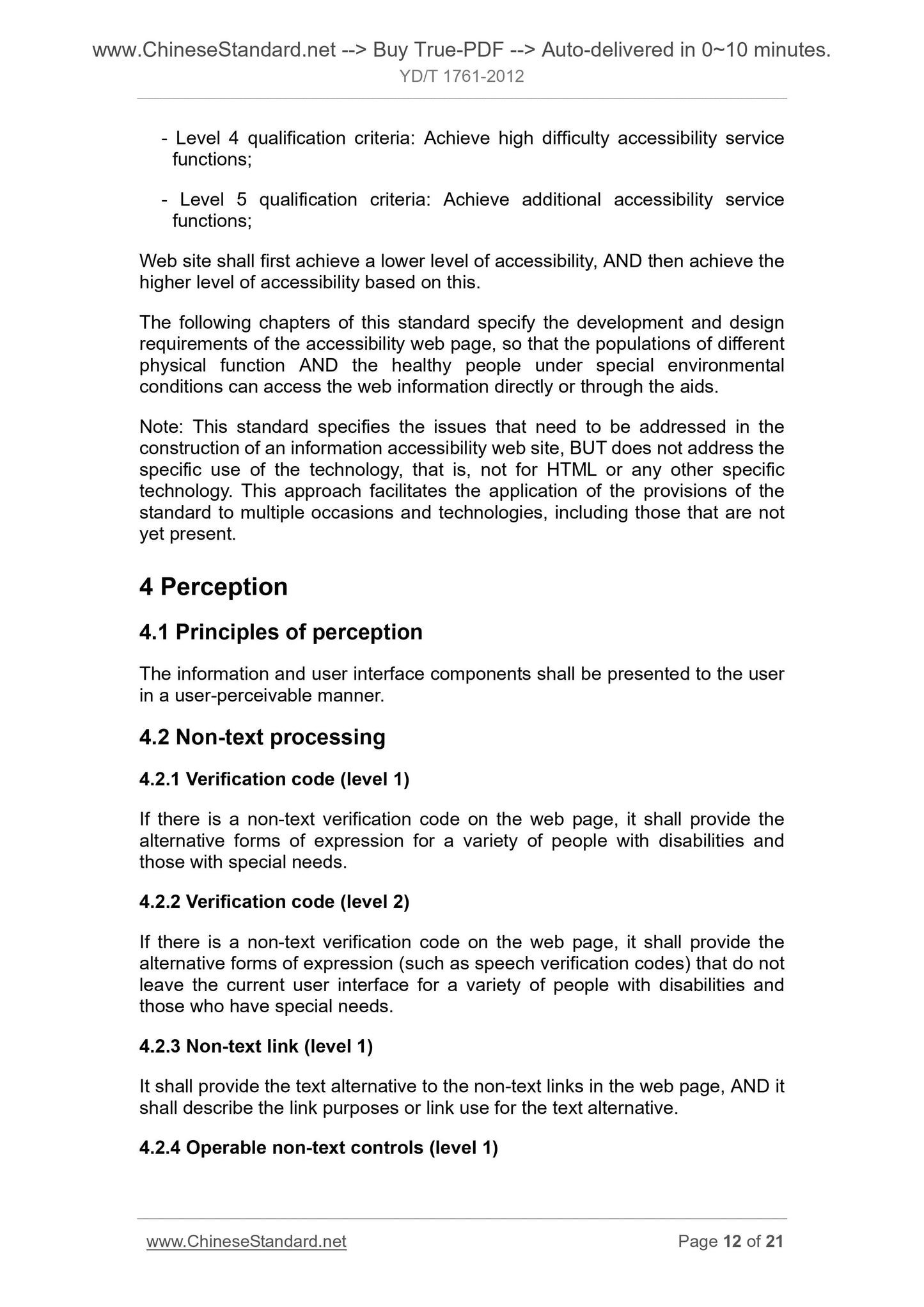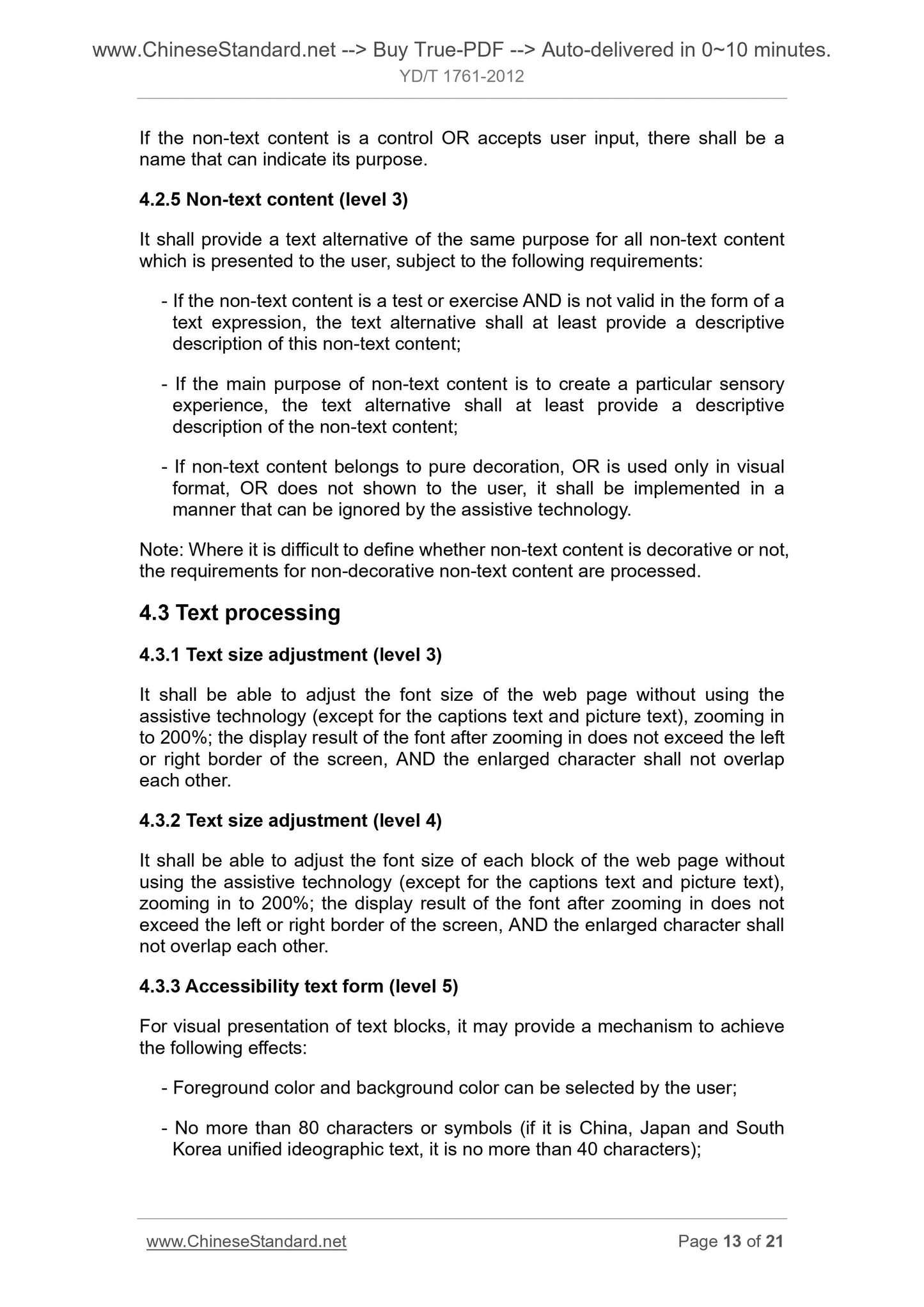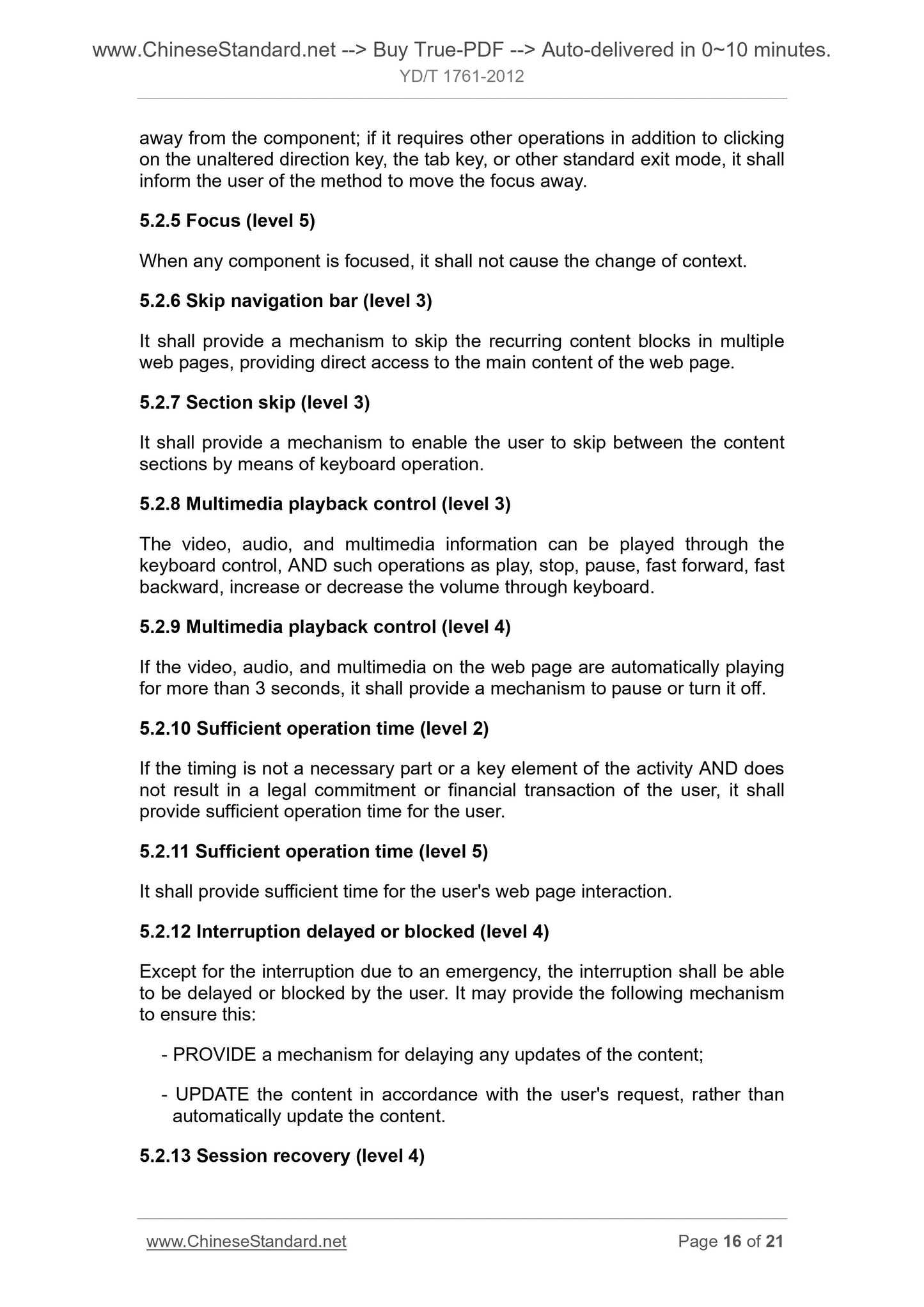1
/
of
12
www.ChineseStandard.us -- Field Test Asia Pte. Ltd.
YD/T 1761-2012 English PDF (YD/T1761-2012)
YD/T 1761-2012 English PDF (YD/T1761-2012)
Regular price
$150.00
Regular price
Sale price
$150.00
Unit price
/
per
Shipping calculated at checkout.
Couldn't load pickup availability
YD/T 1761-2012: Technical requirements for web accessibility
Delivery: 9 seconds. Download (and Email) true-PDF + Invoice.Get Quotation: Click YD/T 1761-2012 (Self-service in 1-minute)
Newer / historical versions: YD/T 1761-2012
Preview True-PDF
Scope
This standard specifies the technical requirements for web design that meetthe web accessibility requirements, including the perception requirements of
web content, the operational requirements of interface components, the
understandability of web content and controls, the requirements for the ability
of content to support existing and future technologies, and so on.
This standard is applicable to to the design, development and management of
web-based accessibility service.
Basic Data
| Standard ID | YD/T 1761-2012 (YD/T1761-2012) |
| Description (Translated English) | Technical requirements for web accessibility |
| Sector / Industry | Telecommunication Industry Standard (Recommended) |
| Classification of Chinese Standard | M21 |
| Classification of International Standard | 33.030 |
| Word Count Estimation | 18,116 |
| Older Standard (superseded by this standard) | YD/T 1761-2008 |
| Regulation (derived from) | Ministry of Industry and Information Technology Bulletin 2012 No. 70; industry standard filing Notice 2013 No. 3 (total 159) |
| Issuing agency(ies) | Ministry of Industry and Information Technology |
| Summary | This standard provides accessibility to meet the technical requirements of Internet site design, including web content requires operational requirements perceptible understandable requirements, interface components, the site content and control the conten |
Share
